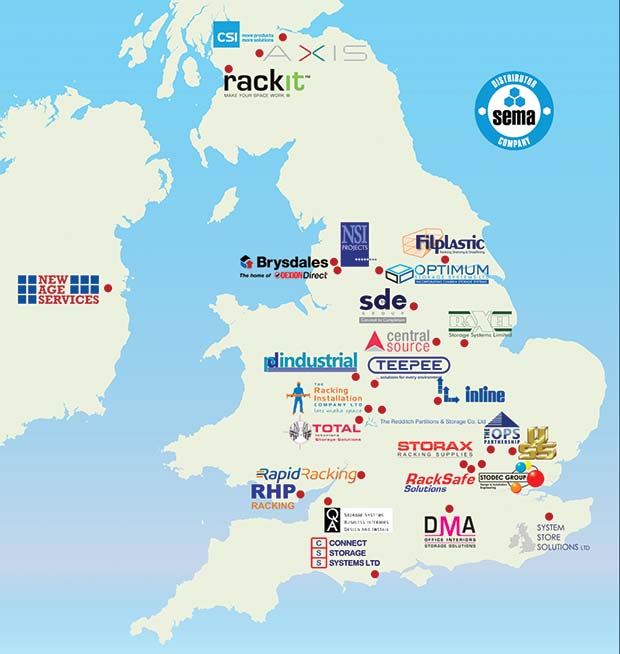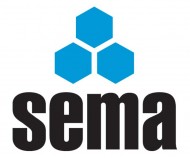SEMA’s new president, Matt Grierson urges everyone in the storage industry to get involved in making the industry a zero-accident place to work.
![DSC_0015[2]](https://warehousenews.co.uk/wp-content/uploads/2015/01/DSC_00152.jpg)
It’s good to hear that the Construction Products Association (CPA) predicted in 2014 that there’s growth in the industrial warehouses sector by 10% during 2015 and 5% between 2016 and 2018.*
Try ‘Googling’ storage systems and there’s a bewildering choice. Safety and efficiency don’t necessarily come at an added price. Right first time is proven to be cheaper than resorting to remedial action. Get it wrong at your peril; “The bitter taste of low quality remains long after the sweet taste of low cost” and all that!
We’re getting there but there’s work to be done before the storage industry becomes a zero-accident environment! Everyone has a contribution to make, from young trainee installers to MDs of major distribution companies. It’s a tall order but I want everyone to know how to get involved.
Here’s how – just hold the thought that safe, efficient storage follows a three-step process; design, installation and maintenance. Now where do you fit in? There are some 60 SEMA member companies out there providing full support.
Step 1: Design
SEMA manufacturers each invest huge sums of money in R & D and offer up their senior people to SEMA’s technical committee. Prevention is certainly better than cure and we believe our new code on rack protection to be a world first and we’ve set the standard again! (See March 15th issue).
 Step 2: Supply and Installation
Step 2: Supply and Installation
There’s now one sure-fire way of knowing that a storage supply firm’s up to scratch on health and safety, the use of trained labour and correct storage design. Just ask to see their current SEMA Distributor Company (SDC) certificate. In 2014, each SDC was independently audited on 25 key quality measures. Most passed (many with flying colours), more joined, the others left. Watch a short video at www.sema.org.uk/SDC
Fifteen years ago, SEMA took action on the need for trained labour and set up the SEIRS scheme for trained, registered installers. Commended by CSCS and RoSPA, now there are some 4000 fully qualified personnel out there. SEIRS is the ONLY scheme which insists on three yearly refresher courses. To support best practice in the workplace, SEMA’s ever popular ‘Toolbox Talks’ for site supervisors now numbers 39.
If you want the job done right, then choose an audited SEMA Approved Installation Company or SAIC. Like SDCs, they are audited and can show their current certificate. Installers must be SEIRS registered, of which an appropriate number trained to SEIRS Supervisory level. A demonstration video on safe rack construction will be available on line and through SAIC companies soon.
Step 3: Maintenance and repair
Racking collapse and subsequent potential prosecution are simple to avoid where there is a safety culture and that correct protocols for inspection, maintenance and repair exist. It’s the duty of an employer to manage risk to life and property who must always demonstrate a safe system of work. Staff need to be ‘safety aware’ in that damage is reported immediately, inspections are undertaken weekly or monthly by a suitably qualified individual and the need to employ an external qualified rack inspector to undertake a six monthly or annual audit is recognised.
 SEMA Approved Rack Inspectors or SARIs implement a traffic light system. Green requires surveillance where defined damage limits are not exceeded as per the SEMA Code of Practice. Amber damage requires ‘Action a.s.a.p.’ or normally within a four-week period. A Red risk indicates serious damage where repairs with identical new parts are required, in line with SEMA’s Code of Practice.
SEMA Approved Rack Inspectors or SARIs implement a traffic light system. Green requires surveillance where defined damage limits are not exceeded as per the SEMA Code of Practice. Amber damage requires ‘Action a.s.a.p.’ or normally within a four-week period. A Red risk indicates serious damage where repairs with identical new parts are required, in line with SEMA’s Code of Practice.
* Source CPA Construction Industry Forecasts 2014-2018.
Tel: 0121 601 6359
Web: www.sema.org.uk






Comments are closed.